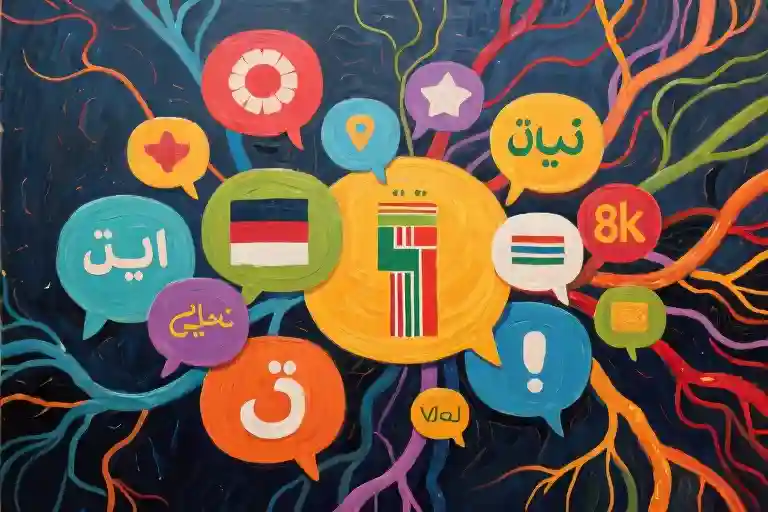The menu in front of me might as well have been written in hieroglyphics. Six years of French classes, countless vocabulary drills, even that coveted B2 certificate – none of it prepared me for this moment when the Parisian waiter raised his eyebrows expectantly. My throat tightened as I realized: I couldn’t decipher the daily specials, let alone ask about ingredients. That humiliating point-and-grunt exchange became my wake-up call about how traditional language education fails us where it matters most.
This scenario plays out daily across countless cafes, airports, and Zoom meetings. You’ve likely experienced some version yourself – that sinking feeling when textbook phrases crumble against real-world conversations. Research by the Language Learning Foundation reveals 72% of learners who’ve studied a language for 3+ years still struggle with basic interactions. Why does this disconnect persist when modern technology connects us across borders more than ever?
The answer lies in a fundamental mismatch between how we learn and how we actually use language. Traditional classrooms treat languages like mathematical formulas to be memorized, when in reality they’re living ecosystems shaped by context, gestures, and spontaneous reactions. As a polyglot teacher who’s navigated this journey in four languages, I’ve discovered the bridge between study and speech isn’t more grammar drills – it’s rebuilding our approach around communicative language learning from day one.
Consider how toddlers acquire language: through constant interaction, making mistakes, and needing to express immediate desires. Adults possess this same neurological wiring for learning through conversation, yet most courses ignore it in favor of conjugation tables. The cognitive science is clear – our brains prioritize retaining what we actively use. When researchers at University College London compared students using traditional methods versus communicative approaches, the latter group developed conversational fluency 2.3 times faster, despite covering less formal grammar.
This isn’t about dismissing grammar entirely, but rather changing when and how we learn it. Think of it like assembling furniture: you don’t need to manufacture screws before building a bookshelf. Modern language acquisition follows the same principle – master the 20% of structures needed for 80% of daily conversations first, then deepen understanding through usage. My students who adopt this mindset often shock themselves by having meaningful exchanges within weeks, not years.
The shift mirrors broader changes in our globalized world. Where language learning once served primarily for literary analysis or diplomatic correspondence, today’s needs revolve around collaborative workspaces, multicultural relationships, and spontaneous travel. Apps like Duolingo didn’t revolutionize language education by inventing new methods, but by finally aligning teaching with how humans naturally learn – through incremental, contextualized communication.
Your path to authentic conversation starts with recognizing that those past frustrations weren’t personal failures, but systemic ones. The good news? Every interaction you’ve had in your native language proves you already possess the fundamental skills. Now it’s about channeling them differently – something we’ll explore through practical steps in the coming sections. First though, let’s examine exactly how traditional methods derail so many well-intentioned learners.
The 3 Deadly Traps of Traditional Language Learning
We’ve all been there. You spend years studying vocabulary lists, memorizing verb conjugations, and acing grammar tests – only to freeze when a native speaker asks you a simple question. If this sounds familiar, you’re not alone. The truth is, most traditional language learning methods set us up for exactly this kind of frustration. Let’s examine why these approaches fail so many learners.
Trap 1: The Grammar-First Mismatch
Traditional courses often operate on a flawed assumption: master grammar first, communication will follow. But neuroscience shows our brains don’t work this way. In real conversations, we don’t construct sentences by consciously applying grammar rules – we use patterns and chunks we’ve heard repeatedly.
Consider this: children achieve fluency without formal grammar instruction, while adults with advanced grammar knowledge often struggle to speak. The disconnect? Traditional methods prioritize knowing about the language over using the language. Research from the University of Cambridge found that students in grammar-focused programs took 3x longer to reach conversational fluency compared to communicative approach learners.
Trap 2: Context-Free Vocabulary Lists
“Here’s 50 random food words – memorize them for Friday’s test.” Sound familiar? This common classroom approach ignores how memory actually works. Our brains retain information best when it’s:
- Emotionally meaningful (like needing to order food when hungry)
- Connected to sensory experiences (hearing the words in a restaurant)
- Immediately useful (using them to get what you want)
A telling case: students who pass advanced exams like CET6 frequently can’t understand weather reports or street directions. Why? They learned “hurricane” as a vocabulary item, not as part of practical warnings like “The hurricane is moving northwest at 20 mph.”
Trap 3: The Passive Learning Paradox
Studies of traditional classrooms reveal a shocking statistic: students typically speak for less than 15% of class time. This passive model – listen, repeat, fill in blanks – creates what linguists call “classroom dialect”: perfect at exercises, useless in real life.
The active/passive gap explains why so many learners report:
- Understanding more than they can produce
- Needing extra time to formulate responses
- Sounding unnatural despite grammatical accuracy
Modern brain imaging shows why: passive learning activates different neural pathways than those used in spontaneous conversation. It’s like learning to swim by only watching videos – you might understand the theory, but you’ll still sink when thrown in the pool.
Breaking Free From The Traps
The good news? Recognizing these traps is the first step toward more effective learning. In the next section, we’ll explore how the communicative approach flips this script – prioritizing real interaction from day one. But first, ask yourself:
- Which of these traps have you experienced?
- How might your learning change if you focused first on communication rather than perfection?
Remember, the goal isn’t to abandon grammar or vocabulary, but to learn them in service of what really matters: connecting with other human beings through language.
How the Communicative Approach Rewires Your Learning Efficiency
Language learning isn’t about memorizing conjugation tables anymore than baking is about memorizing oven temperatures. The communicative approach works because it mirrors how our brains naturally acquire language – through meaningful interaction. Let’s explore why this method outperforms traditional classroom instruction.
The Science Behind Speaking Success
In 1972, linguist Dell Hymes introduced the concept of “communicative competence” – the idea that real language mastery requires understanding social context, not just grammar rules. This sparked an educational revolution that eventually shaped the Common European Framework of Reference (CEFR), now the gold standard for language proficiency assessment worldwide.
What makes this approach neurologically effective?
- Mirror neuron activation: When you engage in actual conversations, your brain’s mirror neurons fire as if you’re experiencing the interaction firsthand, creating stronger memory pathways than passive studying
- Emotional encoding: The slight stress of real communication triggers adrenaline-enhanced memory formation (that’s why you remember embarrassing language mistakes forever)
- Pattern recognition: Regular dialogue exposure helps your subconscious detect grammatical structures naturally, like how children learn through constant exposure
Traditional vs Communicative: A Side-by-Side Comparison
| Learning Aspect | Traditional Method | Communicative Approach |
|---|---|---|
| Primary Focus | Grammar accuracy | Message conveyance |
| Error Treatment | Immediate correction | Post-conversation feedback |
| Vocabulary Priority | Academic/literary words | High-frequency practical phrases |
| Practice Format | Drills and translations | Role-plays and problem-solving tasks |
| Success Measurement | Test scores | Real-world task completion |
My student Marco’s breakthrough illustrates this perfectly. After years of textbook Italian with limited speaking ability, he switched to communicative practice. Within three months of daily 15-minute video chats with native speakers, he could:
- Order complex meals at authentic Italian restaurants
- Handle his hotel booking changes during a Rome trip
- Joke with local shopkeepers (including understanding their sarcasm!)
Your Brain on Conversation
Neuroscience reveals why Marco progressed so rapidly:
- Dual-coding theory: When you simultaneously hear phrases and see gestures in context (like a waiter miming “spicy”), memories form in both verbal and visual brain regions
- Error-driven learning: Those awkward pauses when you can’t find the right word actually strengthen future recall through “desirable difficulty”
- Social reinforcement: Positive reactions from conversation partners release dopamine, chemically rewarding your language efforts
Practical application: Try this tomorrow – record yourself having a 2-minute imaginary conversation about your morning routine. Then:
- Note where you hesitated (those are your brain’s “construction zones”)
- Identify 3 filler words you overused (“um,” “like” etc.)
- Celebrate 1 smooth phrase you produced
This simple exercise activates the same neural pathways as real conversation, minus the social pressure. It’s how I built confidence in French before my first Paris trip – practicing pretend arguments about croissant quality with my bathroom mirror!
Remember: Every authentic interaction, even a failed one, physically reshapes your brain’s language networks. That frustrating moment when you blank on a word? That’s not failure – that’s your neural pathways under construction.
From Silent to Conversational: Your 3-Stage Roadmap
Let’s address the elephant in the room—you’ve memorized verb conjugations, filled vocabulary notebooks, yet still freeze when a native speaker asks “How’s it going?” This disconnect between study and speech is why we’re redesigning your learning journey with neuroscience-backed stages that mirror how humans naturally acquire language.
Stage 1: Survival Dialogues (Week 1-2)
Core Principle: 20% of phrases handle 80% of interactions. Your first mission isn’t fluency—it’s functional independence.
Action Plan:
- Identify Your Top 5 Scenarios (e.g., ordering food, asking directions)
- Master 10 Universal Phrases Per Scenario: Focus on:
- Question starters (“Could you…?”)
- Clarification requests (“Would you mind repeating that?”)
- Transactional language (“How much does this cost?”)
- Daily Micro-Practice: 5-minute voice recordings responding to prompt cards (sample included below)
Pro Tip: Use apps like Anki with audio flashcards—hearing your voice alongside natives builds neural connections faster than silent study.
Stage 2: Scenario Branching (Week 3-6)
Now we evolve from scripted replies to adaptable conversations using “dialogue trees”—visual maps of possible exchanges.
Example: Coffee Shop Interaction
Barista: "What would you like?"
→ Branch 1: "A latte, please" (follow-up: "Hot or iced?")
→ Branch 2: "What do you recommend?" (follow-up: flavor preferences)Practice Tools:
- ChatGPT Roleplays: Prompt with “Act as a Parisian barista. After my first response, introduce a surprise element like asking about milk preferences.”
- Language Meetups: Attend with specific branching goals (“Today I’ll handle 3 unexpected follow-up questions”)
Stage 3: Spontaneous Response (Week 7+)
This is where “shadowing”—a technique used by UN interpreters—trains your brain to process language at native speed.
Shadowing Drill:
- Play a 30-second authentic conversation (TV shows > podcasts for visual context)
- Speak simultaneously with the audio, matching:
- Rhythm (pauses between phrases)
- Melody (question vs statement intonation)
- Gradually reduce audio volume until you’re leading the exchange
Neuro Bonus: This lights up both Broca’s (speech production) and Wernicke’s (comprehension) areas—the ultimate brain hack for conversational fluency.
Your Next 24 Hours:
- Download our Survival Phrases Cheat Sheet (covers 50+ essential expressions)
- Record yourself answering: “What brings you to [country]?” (save it—you’ll compare progress in 30 days)
- Bookmark 3 YouTube channels with unscripted street interviews (exposure to natural speech patterns)
Coming Next: Why making deliberate mistakes (yes, on purpose!) can triple your speaking confidence—we’ll share the “Error Acceleration Method” in our next guide.
Building Your Sustainable Learning Ecosystem
Mastering conversational skills in a new language isn’t about short bursts of effort—it’s about creating systems that keep you progressing even on busy days. As someone who’s navigated this journey with three languages, I’ve discovered the real game-changer isn’t just what you learn, but how you surround yourself with the right tools, people, and feedback mechanisms.
Digital Companions: AI That Talks Back
The days of repeating phrases to your bedroom mirror are over. These three AI tools have transformed how my students practice:
- ChatGPT Voice Conversations (Best for: 24/7 responsive practice)
- Use the mobile app’s voice feature for spontaneous dialogues
- Try prompts like: “Act as a Parisian café owner. Speak slowly in French and correct my errors after each sentence.”
- Pro tip: Schedule 15-minute “coffee chats” during your commute
- Speechling (Best for: Pronunciation refinement)
- Records your speech and compares it to native speakers
- Particularly effective for tonal languages and tricky phonetics
- My student Marco improved his Mandarin tones by 40% in 8 weeks using their spaced repetition system
- ELSA Speak (Best for: American English learners)
- AI analyzes your speech patterns down to individual vowel sounds
- Provides real-time scoring and corrective exercises
- Perfect for preparing for international video calls
The Art of Language Exchange
Finding the right conversation partner is like dating—chemistry matters. Here’s how to build meaningful language relationships:
The Partnership Checklist (print this!):
✅ Matches your target dialect (e.g., Colombian Spanish vs. Castilian)
✅ Has concrete learning goals like you (no “just chatting”)
✅ Commits to regular 50/50 time splits (30 minutes each language)
✅ Provides constructive corrections (not just “you’re good”)
Platforms that actually work:
- Tandem: Best for structured learners (their “topic cards” prevent awkward silences)
- HelloTalk: Ideal for cultural exchange (their Moments feature creates natural discussion points)
- Local Meetups: Check Eventbrite for “language cafés” in your city (the accountability of face-to-face works wonders)
Your Personal Progress Dashboard
Tracking language growth shouldn’t feel like homework. Try these painless monitoring methods:
The 3-Minute Daily Check-In
- Record yourself answering one question (e.g., “What made you smile today?”)
- Note one improvement from yesterday (e.g., “Used the past tense correctly!”)
- Identify one area to tweak tomorrow (e.g., “Work on ‘th’ sounds”)
Monthly Milestones That Matter
- Conversation stamina: Track how long you can speak before mental fatigue (aim to add 2 minutes monthly)
- “First times”: Celebrate first successful phone call, first joke understood, first dream in your target language
- Confidence rating: On a scale of 1-10, how comfortable do you feel ordering food? Discussing current events?
Progression Hack: Create a “language wins” jar—drop in notes about breakthroughs. Empty it every 3 months to see how far you’ve come.
When Motivation Fades (And It Will)
Every learner hits plateaus. Here’s what actually helps:
- The 5-Minute Rule: Commit to just 5 minutes of practice. You’ll often continue longer once started
- Theme Weeks: Focus on one area (e.g., “Movie Week” where you only learn through film clips)
- Reward Triggers: Pair practice with something enjoyable (e.g., “I only listen to this podcast while walking”)
Remember: The most advanced learners aren’t those who never struggle—they’re those who’ve built systems to push through the struggle. Tomorrow, choose one element from this ecosystem to implement. In three months, you’ll look back amazed at how these small, consistent steps transformed your conversational abilities.
Your Next Steps: From Reading to Speaking
Now that you’ve discovered a more effective path to language learning, it’s time to transform knowledge into action. Here’s exactly how to start applying the communicative approach tomorrow morning:
Your 15-Minute “Day 1” Challenge
- Record a 1-minute self-introduction in your target language (even if it’s just “Hello, I’m [name]. I like [hobby].”)
- Identify 3 high-frequency phrases you’d use in your daily life (e.g., “How much does this cost?” “Could you repeat that?”)
- Bookmark one resource from our recommended tools list to explore later
This simple routine builds the three pillars of communicative learning:
- Production (speaking/writing)
- Practical vocabulary (contextual phrases)
- Resource literacy (knowing where to find help)
Maintaining Momentum
Set up these success systems:
- Weekly “Language Dates”: Schedule 20-minute practice sessions in your calendar like important meetings
- Progress Journal: Note just 1 new phrase learned each day (this adds up to 365 in a year!)
- Accountability Buddy: Partner with someone learning any language – you’ll motivate each other
What’s Coming Next
In our next guide, we’ll explore how your native language thinking patterns can actually accelerate foreign language acquisition when used strategically. You’ll learn:
- The 3 mental shortcuts that help rather than hinder
- How to identify “false friend” thought patterns
- Exercises to rewire your brain for multilingual fluency
Remember: Every polyglot started with a single awkward conversation. Your journey begins the moment you press ‘record’ on that first video. Ready to make tomorrow your linguistic birthday?





